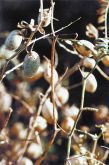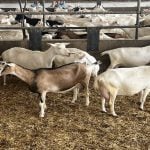The discovery of H1N1 flu virus in an Alberta hog barn delivered one more body blow to a badly injured industry, said the president of the Canadian Pork Council.
“It’s just one thing after another in an industry that has been hurt so badly in the last three years. This is just another shock to the system that is going to be very difficult to overcome,” Mayerthorpe, Alta., hog producer Jurgen Preugschas said after the May 2 announcement that pigs had caught H1N1 flu from a carpenter who was working at the barn after returning from a trip to Mexico.
Read Also

Powerful solar storm lights up night time sky
Prairie skywatchers have been on high alert the last few nights as spectacular aurora displays have made the night time…
“We were expecting to come into a profitable time period in the industry for the first time in three years and now this. A lot of guys are not going to be able to weather this.”
He said the discovery of H1N1 in humans and now the apparent transfer of the virus from a human to a pig follows troubles generated by a high Canadian dollar, low hog prices, U.S. country-of-origin legislation and the Alberta government’s decision to institute a refundable checkoff.
“I know the financial situation we’re all in and none of us are in very good financial shape and we can’t handle a lot more of this,” he said.
Preugschas estimates the H1N1 flu outbreak has cost producers $10 to $20 a pig. He hopes the discovery of the virus in pigs won’t cause the price to drop even further.
Hog producers may be forced to ask federal and provincial governments for more financial assistance to get through the difficult period, he added.
Alberta Pork president Herman Simons said the transfer of the virus to hogs could cause serious problems in the industry, especially if export markets close to Canadian pork.
“This one has the risk of putting our industry under. It has the risk of major devastation,” Simons said.
The country exports 60 percent of its pork.
“I hope it will be minimal impact, but we fear for major impact,” he said. “There’s a major fear issue here.”
China has announced it is closing its borders to pigs and pork products from Alberta. Preugschas said the Chinese market is not large, but it’s important because it buys offal products.
Russia has closed its border to pork from parts of the United States and Mexico, and banned raw pork from British Columbia, Ontario and Nova Scotia.
Alberta chief provincial veterinarian Gerald Hauer said his office was notified April 28 that a pig herd in central Alberta appeared to have flu symptoms. The Canadian Food Inspection Agency was notified and samples from the farm were sent to the National Centre for Foreign Animal Disease in Winnipeg.
On May 1, tests indicated the samples would likely be positive for the flu virus. Hauer said it’s not uncommon for pigs to get the flu.
CFIA placed the barns under quarantine, the hog worker has recovered and all the pigs are recovering or have recovered.
Cases of H1N1 have been reported in previous years but not this strain. The virus usually moves quickly through a barn when pigs get influenza. Most of the pigs will be sick in a short time and it will quickly pass. There is generally no treatment provided. The symptoms in pigs are similar to the human flu.
“They all look lousy, they feel like we do when we have the flu,” Hauer said. “They don’t eat, they cough, they have runny noses, they sneeze, they lay around all the time, kind of like we do. Within a few days they start feeling better and in a few more days everybody is feeling better.”
Hauer said his office issued a bulletin to producers and veterinarians April 24 warning them to avoid going into hog barns if they have flu-like symptoms.
Simons said the worker couldn’t be faulted for transmitting the virus.
“We all get sick. You do have to go into the barn to do the work and we do sometimes have the flu. We can’t stay out of the barn and not feed the pigs. That’s not an option.”
Dr. Andre Corriveau, Alberta’s chief medical officer of health, said the discovery has few consequences for public health.
“From a human health perspective, it’s just an anecdote. We are already dealing with this issue in our population.”














